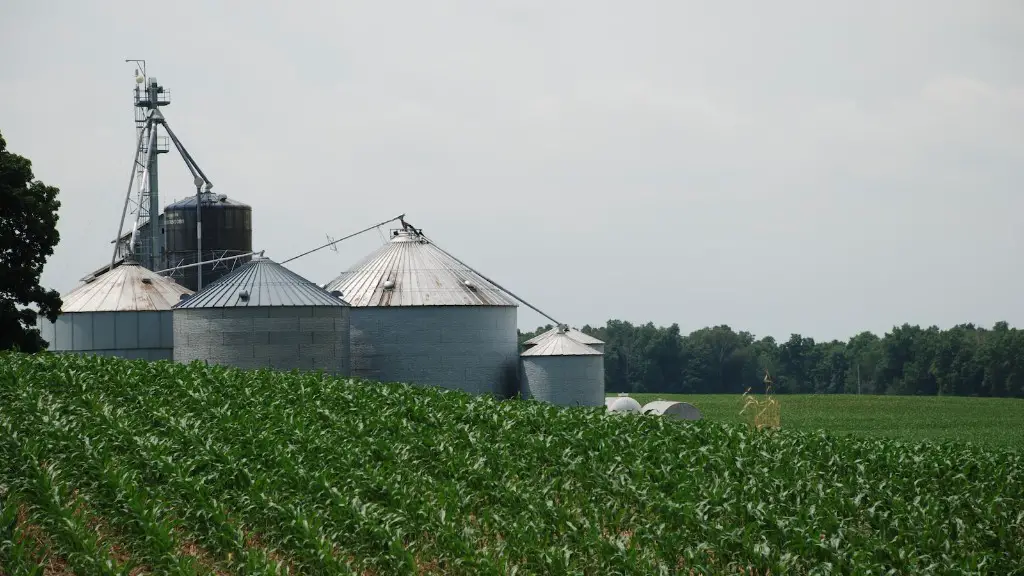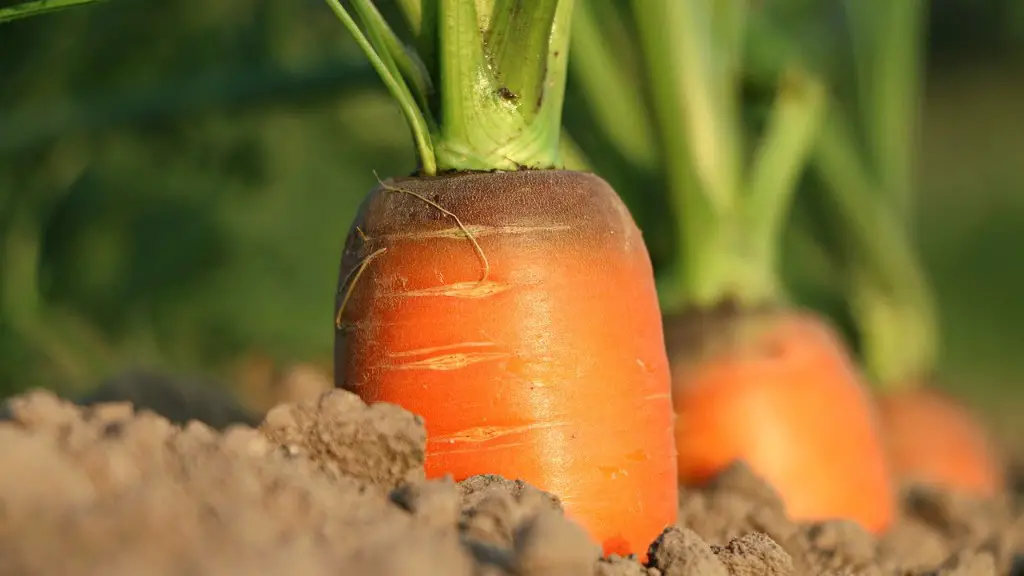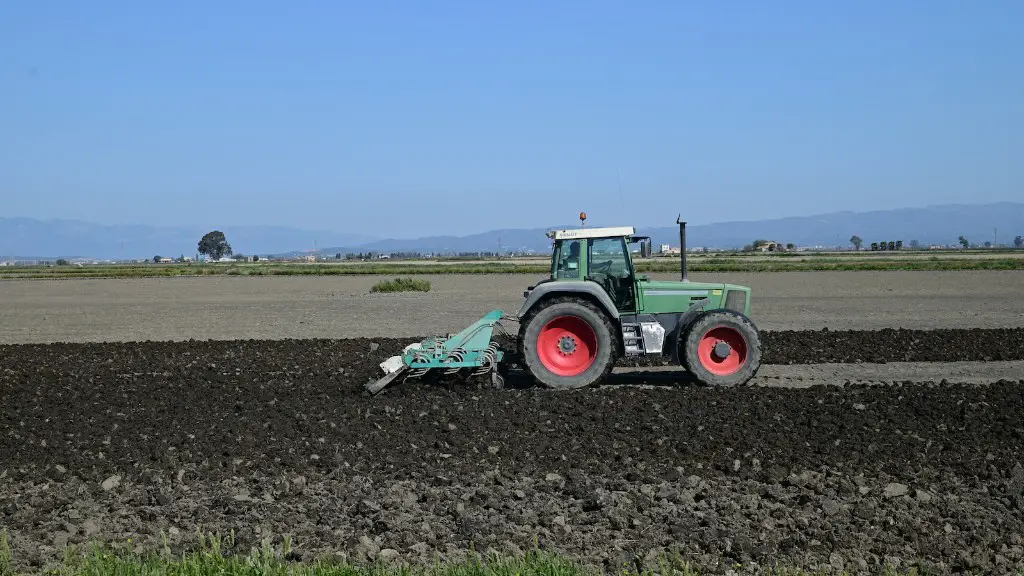Agriculture relies on the availability of adequate water to sustain crop growth. Having water on-hand for irrigation purposes is essential for many farmers and agriculturalists. Building a water tank for agriculture is a great way to maximize the use of the available water resources. Here I will describe how to build a water tank for agriculture, step by step.
First, research the requirements for your area and decide which type is best for your particular application. Different regions will have different regulations, and you’ll want to build something that meets your state and/or local regulations. There are a variety of tank types and dimensions that satisfy certain regulations and are suitable for certain situations. Determine what is best for you and your region.
Second, plan the layout of the tank and calculate what materials you will need. The tank must be strong enough to hold the water but not be too large for the area to accommodate it. You will also need to consider weight and levels of water pressure. Consider which type of tank material is the most appropriate for your area, such as concrete, plastic, or steel.
Third, source the necessary materials and make sure they are of the right quality. You can find most materials online, but make sure they meet grade and quality standards. You will also need to make sure the materials are compatible with one another and can be relied upon to withstand the water pressure in the area.
Fourth, assemble the tank according to the plans. Depending on the type of tank you choose, some assembly may be required. When building a concrete tank, you will need to create a frame of sturdier material, such as steel rebar, to support the concrete and keep it from cracking. Other types of tanks may require welding or bolting the parts together.
Fifth, position the tank in its suitable spot. Some tanks may need a concrete foundation to rest upon for extra support, so make sure this is done prior to installation. When the tank is in its correct spot, secure it properly with braces if needed. You should also check the base area for issues such as ground shifting, erosion, or flooding.
Finally, install the pipes, hoses, and other connections needed for the tank. This will include pipes for drainage and filling, as well as valves and other fittings depending on the individual application. Make sure to test the connections and ensure that the fitting and pipes are securely sealed and operable before using the tank.
Determining the Capacity of the Tank
The capacity of a tank is a key consideration when building a water tank for agriculture. The tank should be large enough to hold the necessary water needed to meet the demands of the crops. Different soil types and climates will require different water amounts, so you need to determine the water requirements for your particular crop and region. Tank capacities can be calculated using special formulas and guidelines for irrigation. Be sure to take into account rainfall as this will also affect the water supply.
The capacity of a water tank is given in liters of water, and the volume is determined by the height, width, and length of the tank. The capacity of a water tank is taken into account when designing the tank, so it’s important to be accurate in calculating the tank size. The capacity can also be altered by changing the height, length, or width of the tanks, or a combination of two or more of those parameters.
Different sizes and shapes of tanks can also affect the storage capacity. For example, a larger cylinder with the same area as a smaller one can hold more water. This is due to the fact that the sides of the larger cylinder are farther apart, creating more volume in the tank. Cylindrical tanks are commonly used in agriculture, though other shapes such as interconnected pools and large concrete containers may be used in certain applications.
An important factor to consider when determining the capacity of the tank is the rate of seepage. Different materials and designs can have varying levels of seepage, so you must perform tests on the tank to determine if it meets the requirements of the application. This is especially important for recycled tanks or older tanks that may have become compromised over time.
Maintenance Requirements for the Tank
Once a water tank for agriculture has been built, it is important to maintain the tank in order to keep it functioning properly. Maintenance requirements may vary depending on the type of tank, the materials used, and the environment the tank is in. Tasks such as cleaning the tank, checking for leaks, and patching holes and cracks should be done regularly to prevent any major damage.
It is important to make sure that any pipes and valves that are connected to the tank are also properly maintained. This includes checking for blockages and corrosion and replacing fittings if needed. If there are any issues with the pipes, such as leakages or blockages, they should be fixed immediately in order to prevent any issues with the flow of water.
In areas that experience cold winters, the tank should be insulated to prevent the water inside from freezing. This is especially important for plastic tanks which are not able to tolerate the cold as well as metal tanks. Proper insulation of the tank can help maintain an even temperature in order to prevent any freezing.
Regular inspections of the tank should also be done and any structural issues such as cracks and holes should be addressed immediately. Improper maintenance can lead to structural failure, leakage, and even contamination of the water, so regular check-ups are important.
Pumps, filters, and other auxiliary equipment should also be monitored and serviced regularly in order to prevent any damage or malfunctions. Filters need to be cleaned or replaced to prevent clogging, while pumps must be oiled and checked for any leaks or malfunctioning components. Cleaning out the tank and its associated systems is an important part of regular maintenance.
Environmental Concerns of Building a Water Tank for Agriculture
When building a water tank for agriculture, there are many environmental considerations that must be taken into account. Building a tank too large can lead to water waste and pollution, while building a tank too small may not be enough to meet the water needs of the crops. Each situation will require its own assessment of the environmental costs and benefits of a tank.
The materials used to build the tank can have an impact on the environment as well. A tank made of recycled material, such as plastic, can reduce waste by using previously discarded materials. On the other hand, toxic runoff from steel or concrete tanks can have an adverse effect on groundwater, streams, and other nearby bodies of water.
The design of the tank can also have an effect on the environment. An earthen tank will require more land and can have a greater impact on the environment, while a metal tank may require coils and other accessories that can have potential safety risks and cause pollution.
The location of the tank is also important, as tanks built near heavily populated areas can cause noise pollution, water runoff, and other issues if not installed properly. Tanks should be positioned in a way that reduces the risk of noise, air, and light pollution, as well as runoff.
Finally, the maintenance and upkeep of the tank is essential for ensuring minimal environmental impacts. Leaks, cracks, and other issues can result in water loss or pollution, so regularly inspecting and performing maintenance is a must. Additionally, it is important to note that any chemicals used to treat the water should be used in accordance with local and state regulations.
Essential Safety Considerations
Building a water tank for agriculture comes with certain safety considerations that should not be ignored. These include making sure the tank is properly vented and contains the necessary safety apparatus, as well as proper maintenance and upkeep of the tank and its components.
Ventilation is an important factor when it comes to safety. Standards must be followed with regards to the number and placement of vents, as well as their size and material. Correct placement of vents can ensure that the tank is not overfilled, and can also help reduce the risk of gas buildup in the tank.
Safety valves and other apparatuses should also be included when building a water tank for agriculture. Safety valves allow for pressure relief in cases of excessive pressure buildup within the tank, helping to prevent damage or rupture of the tank. Additionally, pressure gauges, relief valves, and other fittings can be used to monitor and control the pressure within the tank.
Regular maintenance of the tank should also be done to ensure safety. This includes inspecting the tank for leaks and cracks, checking the materials and fittings, and ensuring that all valves and pipes are in working order. Any minor issues should be addressed immediately in order to prevent any potential danger.
Finally, using the right chemicals to treat the water is important. In some areas, chemicals are required to reduce the risk of algae, bacteria, and other potentially dangerous microorganisms. It is important to follow the local and state guidelines when using these chemicals and to ensure that they are used in the right amounts and in the right areas.





